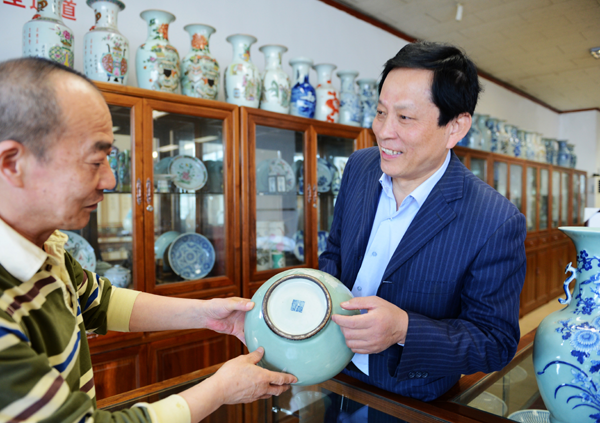 |
|
Xu Qing, 56, has been working at the Henen Provincial Antiques Store since 22. [Photo by Xiang Mingchao/For China Daily] |
Antique stores still have a role to play, an even bigger one. "In a market saturated with fakes, State-owned antique stores were viewed by the general public as one of the very few places to buy something authentic. We are brand names."
And for the first time, those who spent decades working in the antique stores have started buying items. "It's so exciting out there, the whole world of collecting. And we had been standing on the doorstep for so long," says Li. "No one seems to bother with the law that much."
Many of the staff from the State-owned stores have approached their former customers, according to Xu. "A colleague of mine flew to Hong Kong a few years ago, where he was led through full rooms of scroll paintings, all tied up in bundles. He was asked to pay a certain price for each bundle, without being able to see what was in it," said Xu. "It was obvious that for all these years, that Hong Kong buyer had never bothered to open any of the bundles, at alone the scrolls."
"For my colleague, it's a gamble. He would win big if there's just one piece inside that bundle that was painted by a master," he says.
Xu said the closest contact he's ever had with a master painting was not long after he joined the Henan store, at the age of 22, having just completed his service in the army. "They asked me to learn how to mount traditional Chinese ink-and-brush paintings, a job that I thought was boring. But I learned nonetheless and the first painting I did was by Wu Changshuo (1844-1927), an undisputable master whose paintings routinely sell for hundreds of thousands of dollars today," says Xu. "After having it mounted, I hung it on the wall, and admired it from a few steps away. That's when a buyer from Japan came in. He looked around the four walls before going directly to the painting. 'This one, please,' he said."
"Because Wu was born relatively late, at the time the painting was sold, in the early 1980s, his works were not rated as national treasures," says Xu. "Even today, I ask myself: where is the painting? It's my only hope that our future generations will not have to ask that question."
|
|
|
|
|
|
|
|
